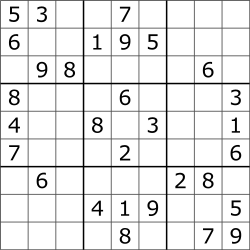
An important type of step used in a mathematical argument is the replacement of a statement with another statement with the same truth value. Because of this, methods that produce propositions with the same truth value as a given compound proposition are used extensively in the construction of mathematical arguments.
DEFINITION 1:
A compound proposition that is always true, no matter what the truth values of the propositional variables that occur in it, is called a tautology. A compound proposition that is always false is called a contradiction. A compound proposition that is neither a tautology nor a contradiction is called a contingency.
Examples:
"It is either raining or it is not raining" is
a tautology: it is always true.
"It is both raining and not raining" is a
contradiction. It cannot ever be true.
"It is raining and the sun is out" is a
contingency: it might be true, or might not.
Compound propositions that have the same truth values in all possible cases are called logically equivalent.
| Example of a Tautology and a Contradiction | |||
|---|---|---|---|
| p | ¬p | p ∨ ¬p | p ∧ ¬p |
| T | F | T | F |
| F | T | T | F |
"It is red or not red" is always true; "It is both red and not red" is always false.
| De Morgan's Laws |
|---|
| ¬(p ∧ q) ≡ ¬p ∨ ¬q |
| ¬(p ∨ q) ≡ ¬p ∧ ¬q |
Row 1: "It's not raining and sunny" means that it is not
raining or it's not sunny.
Row 2: "It's not raining or sunny" means that it is not
raining and it's not sunny.
Using a truth table to demonstrate De Morgan's second
law:
| Truth Tables for ¬(p ∨ q) and ¬p ∧ ¬q | ||||||
|---|---|---|---|---|---|---|
| p | q | p ∨ q | ¬(p ∨ q) | ¬p | ¬q | ¬p ∧ ¬q |
| T | T | T | F | F | F | F |
| T | F | T | F | F | T | F |
| F | T | T | F | T | F | F |
| F | F | F | T | T | T | T |
A whole bunch o' fundamental equivalences we can use as building blocks for more complex proofs:
| Logical Equivalences | |
|---|---|
| Equivalence | Name |
|
p ∧ T ≡ p
p ∨ F ≡ p |
Identity laws |
|
p ∨ T ≡ T
p ∧ F ≡ F |
Domination laws |
|
p ∨ p ≡ p
p ∧ p ≡ p |
Idempotent laws |
| ¬(¬p) ≡ p | Double negation law |
|
p ∨ q ≡ q ∨
p
p ∧ q ≡ q ∧ p |
Commutative laws |
|
(p ∨ q) ∨ r ≡
p ∨ (q ∨ r)
(p ∧ q) ∧ r ≡ p ∧ (q ∧ r) |
Associative laws |
|
p ∨ (q ∧ r) ≡
(p ∨ q) ∧
(p ∨ r)
p ∧ (q ∨ r) ≡ (p ∧ q) ∨ (p ∧ r) |
Distributive laws |
|
p ∨ (p ∧ q)
≡ p
p ∧ (p ∨ q) ≡ p |
Absorption laws |
|
p ∨ ¬p ≡ T
p ∧ ¬p ≡ F |
Negation laws |
| Logical Equivalences Involving Conditional Statements |
|---|
| p → q ≡ ¬p ∨ q |
| p → q ≡ ¬q → ¬p |
| p ∨ q ≡ ¬p → q |
| p ∧ q ≡ ¬(p → ¬q) |
| ¬(p → q) ≡ p ∧ ¬q |
| (p → q) ∧ (p → r) ≡ p → (q ∧ r) |
Negate: "You have studied hard and you will get an A."
Answer: "Either you have not studied hard or
you will not get an A."
Negate: "You have slacked off or you have studied the
wrong subject."
Answer: "You have not slacked off and
you have not studied the wrong subject."
New logical equivalences can be constructed from already existing logical equivalences given that the truth value of the original compund proposition shouldn't change when replacing with the latter proposition.
Example Show that ¬ (p→ q) and p ∧ ¬q are logically equivalent
Solution We have ¬(p →q)≡ ¬(¬p ∨ q) ≡ ¬(¬p) ∧ ¬q ≡ p ∧ ¬q
A compound proposition is satisfiable if there exists a
combination of truth values that render it true.
("It is raining or it is sunny"
and "It is not raining or it is
not sunny") are mutually satisfiable.
("It is raining or it is sunny" and "It is not raining and
it is not sunny") are not mutually satisfiable.
There are many applications of this idea, in circuit design, robotics, software testing, genetics and more. One such application is to the game of...

NOT COVERED FURTHER SPRING 2018
To systematically test for the truth of a compound
proposition with 1000 variables involves
21000 propositions, the number:
10715086071862673209484250490600018105614048117055336074437503883703510511249361224931983788156958581275946729175531468251871452856923140435984577574698574803934567774824230985421074605062371141877954182153046474983581941267398767559165543946077062914571196477686542167660429831652624386837205668069376
Even a supercomputer will take longer than the life of the
universe to solve such a problem. This problem is NP-complete.
1. b; 2. b; 3. b; 4. b; 5. a;